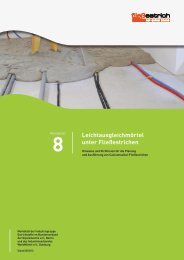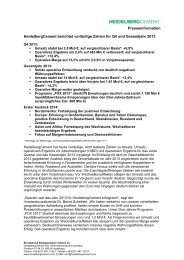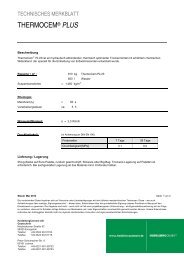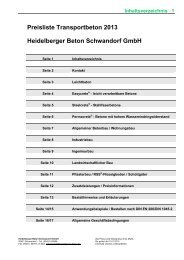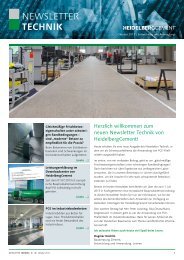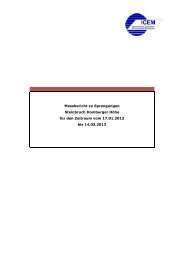TPCC Annual Report 2008.indd - HeidelbergCement
TPCC Annual Report 2008.indd - HeidelbergCement
TPCC Annual Report 2008.indd - HeidelbergCement
Create successful ePaper yourself
Turn your PDF publications into a flip-book with our unique Google optimized e-Paper software.
Tanzania Portland Cement Company Ltd, <strong>Annual</strong> <strong>Report</strong> 2008<br />
• in respect of taxable temporary differences associated with investments in subsidiaries and associates, where<br />
the timing of the reversal of the temporary differences can be controlled and it is probable that the temporary<br />
differences will not reverse in the foreseeable future.<br />
Deferred tax assets are recognised for all deductible temporary differences, carry forward of unused tax credits and<br />
unused tax losses, to the extent that it is probable that taxable profit will be available against which the deductible tem-<br />
porary differences, and the carry forward of unused tax credits and unused tax losses can be utilised except:<br />
• where the deferred tax asset relating to the deductible temporary difference arises from the initial recognition<br />
of an asset or liability in a transaction that is not a business combination and, at the time of the transaction,<br />
affects neither the accounting profit nor taxable profit or loss; and<br />
• in respect of deductible temporary differences associated with investments in subsidiaries and associates, de-<br />
ferred tax assets are recognised only to the extent that it is probable that the temporary differences will reverse<br />
in the foreseeable future and taxable profit will be available against which the temporary differences can be<br />
utilised.<br />
The carrying amount of deferred tax assets is reviewed at each balance sheet date and reduced to the extent that it is no<br />
longer probable that sufficient taxable profit will be available to allow all or part of the deferred tax asset to be utilised.<br />
Unrecognised deferred tax assets are reassessed at each balance sheet date and are recognised to the extent that it has<br />
become probable that future taxable profit will allow the deferred tax asset to be recovered.<br />
Deferred tax assets and liabilities are measured at the tax rates that are expected to apply in the year when the asset is<br />
realised or the liability is settled, based on tax rates (and tax laws) that have been enacted or substantively enacted at<br />
the balance sheet date.<br />
Current tax and deferred tax relating to items recognised directly in equity are also recognised in equity and not in the<br />
income statement.<br />
Deferred tax assets and deferred tax liabilities are offset if a legally enforceable right exists to set off current tax assets<br />
against current tax liabilities and the deferred taxes relate to the same taxable entity and the same taxation authority.<br />
Value added tax: Revenues, expenses and assets are recognised net of the amount of value added tax except:<br />
• where the value added tax incurred on a purchase of assets or services is not recoverable from the taxation au-<br />
thority, in which case the value added tax is recognised as part of the cost of acquisition of the asset or as part<br />
of the expense item as applicable; and<br />
• receivables and payables that are stated with the amount of value added tax included.<br />
The net amount of value added tax recoverable from, or payable to, the taxation authority is included as part of receiva-<br />
bles or payables in the balance sheet.<br />
6. Significant accounting judgments, estimates and assumptions<br />
The preparation of the Company’s financial statements requires management to make judgments, estimates and as-<br />
sumptions that affect the reported amounts of revenues, expenses, assets and liabilities, and the disclosure of con-<br />
41





